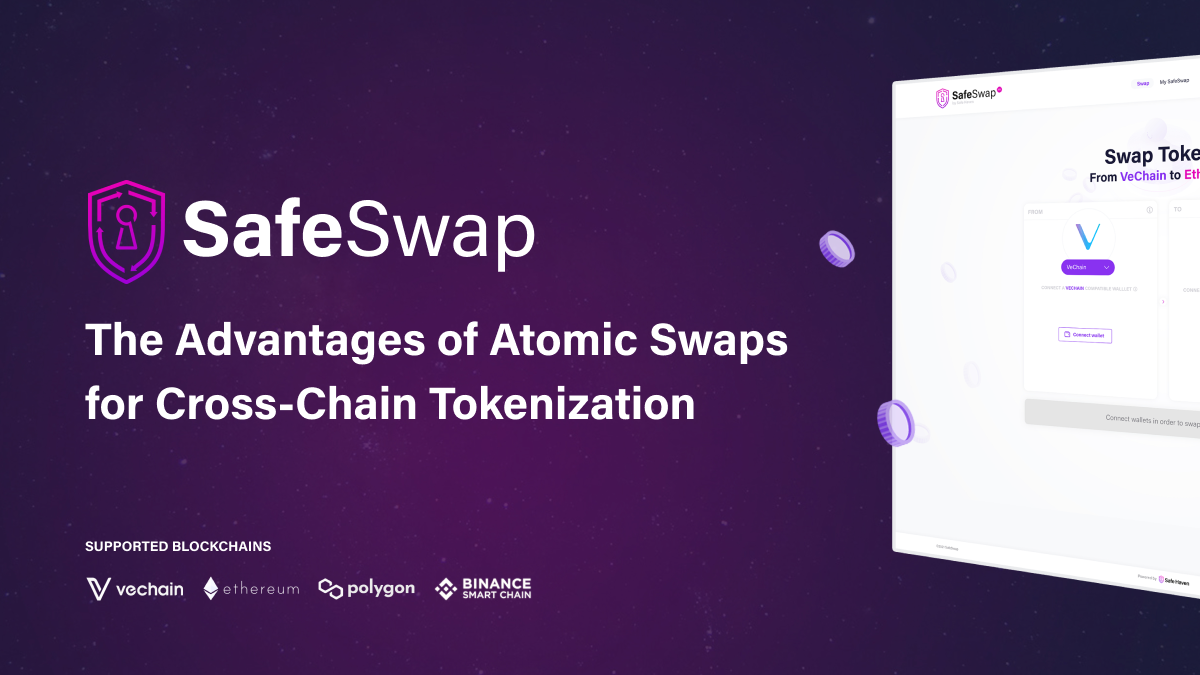
The emergence of SafeSwap, our cross-chain bridge for atomic swaps, may leave you wondering about its unique value proposition, since there are already plenty of bridges out there.
In a previous article, we explored the limitations of wrapped tokens and why we built SafeSwap as an alternative solution.
Now, let’s delve into the advantages of atomic swaps, the core technology behind SafeSwap, for cross-chain tokenization.
Enhanced Security with Atomic Swaps
While wrapped tokens may initially seem appealing, they introduce vulnerabilities such as hacks, unauthorized trading, and manipulated token supply.
These risks can undermine the trust and integrity of the underlying assets, making them less desirable for projects seeking secure cross-chain tokenization.
On the other hand, atomic swaps eliminate intermediaries and reduce the risk of hacks and fraudulent behavior associated with wrapped tokens.
By leveraging atomic swaps, your assets remain safe and secure throughout the swapping process, providing a superior level of security compared to wrapped tokens.
Trustless Transactions: Empowering the User
Wrapped tokens often involve centralized parties such as custodians and wrapping protocols, introducing counterparty risks and potential dependence on third parties.
In contrast, atomic swaps via SafeSwap enable trustless transactions of native assets, occurring directly between wallets without the need for intermediaries.
This decentralized approach builds trust and eliminates counterparty risks, allowing you to retain full ownership and control of your tokens.
By removing the reliance on intermediaries, atomic swaps provide a more user-empowering solution compared to wrapped tokens.
Expanded Reach and Interoperability
While wrapped tokens are limited to specific wrapping protocols or exchanges, atomic swaps allow projects to make their tokens available across multiple blockchains natively.
This expanded reach increases liquidity and trading opportunities, driving the growth and adoption of your project.
Additionally, atomic swaps foster cross-chain compatibility, enabling tokens from different blockchains to interact within decentralized applications and DeFi protocols, unlocking the full potential of interoperability.
In contrast, wrapped tokens may face limitations in terms of compatibility and interoperability.
Transparency and Auditability
Wrapped tokens and traditional swapping methods may lack transparency and auditability, raising concerns about the integrity of the process.
Atomic swaps leverage smart contracts, ensuring transparency and auditability of the swapping process.
All transactions are recorded on the blockchain, guaranteeing immutability and accountability.
This transparency adds an extra layer of trust and confidence, allowing you to verify and audit the entire swapping process.
Embracing the Future with Future-Proof Solutions
Wrapped tokens often rely on specific wrapping standards, which may become outdated or require complex integrations in the future.
While atomic swaps provide a future-proof approach to cross-chain tokenization as they adapt to future blockchain developments and upgrades without relying on specific wrapping standards or complex integrations.
By adopting SafeSwap’s atomic swap protocol, you ensure that your cross-chain tokenization strategy remains sustainable and adaptable in the ever-evolving blockchain landscape.
SafeSwap, powered by atomic swaps, offers a secure, efficient and reliable solution for cross-chain tokenization.
Are you a builder or project owner looking to leverage the power of SafeSwap?
Apply for a listing and make use of our atomic swap protocol and cross-chain bridge »
If you’re a user, you can earn commissions by referring blockchain projects considering cross-chain integration for their native tokens.
Learn more about our SafeSwap Commission Program and become part of this transformative ecosystem »
Back to news
 Nederlands
Nederlands Deutsch
Deutsch Français
Français